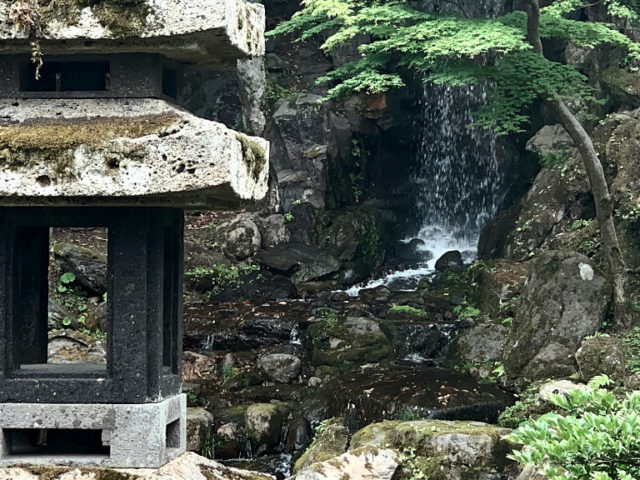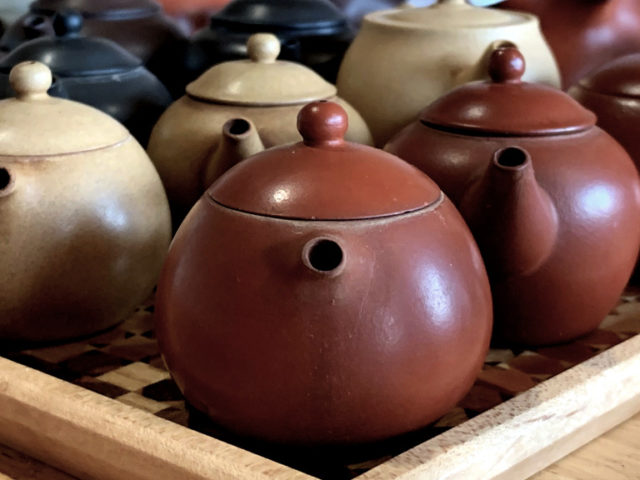Tea Ceremony in Kanazawa, the “Tea Ceremony Kingdom”

There’s something transformative in getting absorbed in a traditional Japanese tea ceremony…
The fresh scent of bamboo from the whisk at work on the powder, the sound of the ladle as it’s laid to rest, the sheen of color on the bowl…
The silhouette of the flower arrangement.
The motif of the host’s kimono.
All begin to glow with meaning.
In all of Japan, the tea ceremony holds importance. So why make a point to have the experience in Kanazawa?
Welcome to the “Tea Ceremony Kingdom”
In ancient Japan, the Kaga Province—what is now Ishikawa and Toyama Prefectures—had many monikers due to its intense focus of producing culture and craftwork. One of those nicknames was the “Tea Ceremony Kingdom.” Local traditional crafts focused on tea ceremony utensils and peripherals: Wajima and Yamanaka lacquerware for tea caddies, Ohi and Kutani-yaki pottery for bowls and plates, Kaga-yuzen silk for kimono.
The Maeda lords who ruled Kaga Provence invited the founders of two schools of tea ceremony (Urasenke and Sowa) to Kanazawa to develop their craft.
While there are just a few dominant schools of tea ceremony in Japan—there are dozens and dozens of smaller schools throughout—the one most commonly seen in Kanazawa is Urasenke. More than other schools, Urasenke stresses the experience of the guest, such as allowing for more flexible seating options. It also puts more focus on well-crafted and unique utensils. Small details that differentiate the Urasenke school also include folding the ceremonial cloth with two hands (as opposed to one), whisks and spoons made of untreated bamboo, and a frothier finish to the tea that lends it a spring-green color.
Sowa is one of the smaller schools that has survived in Kanazawa, with roots in nearby Takayama. This school is marked by its blend of aristocratic, samurai and “wabi-sabi” elements.
Although the Sowa School, along side Urasenke, was once a preferred practice of the local lords in the Edo Period, there are few practitioners today.
How Small Differences Alter Experience
With differences as small as which hand holds a cloth or whether to use earthenware or porcelain for the bowl, an inexperienced visitor might wonder whether there is really any real difference at all.
So much of traditional Japanese cultural practices are based on what is often translated as “The Way,” a method of behavior molded by long histories of practice and tradition. Shado, or calligraphy, is “The Way of Writing.” Bushido is “the Way of the Samurai.” Even Shinto means “The Way of the Gods.”
But sado, “The Way of Tea,” has a particularly strong effect with its seclusion from the outside world and ritualistic procession of quietude, presentation, scent, and taste. When done enough times, time itself begins to collapse. Movements, placements, and positions remain the same, and the experience between the first and the fiftieth bowl blur.
Soon only those small differences stand out, reverberating throughout the individual ceremony like a ripple across a still pond.
The fresh scent of bamboo from the whisk at work on the powder, the sound of the ladle as it’s laid to rest, the sheen of color on the bowl…
The silhouette of the flower arrangement.
The motif of the host’s kimono.
All begin to glow with meaning.
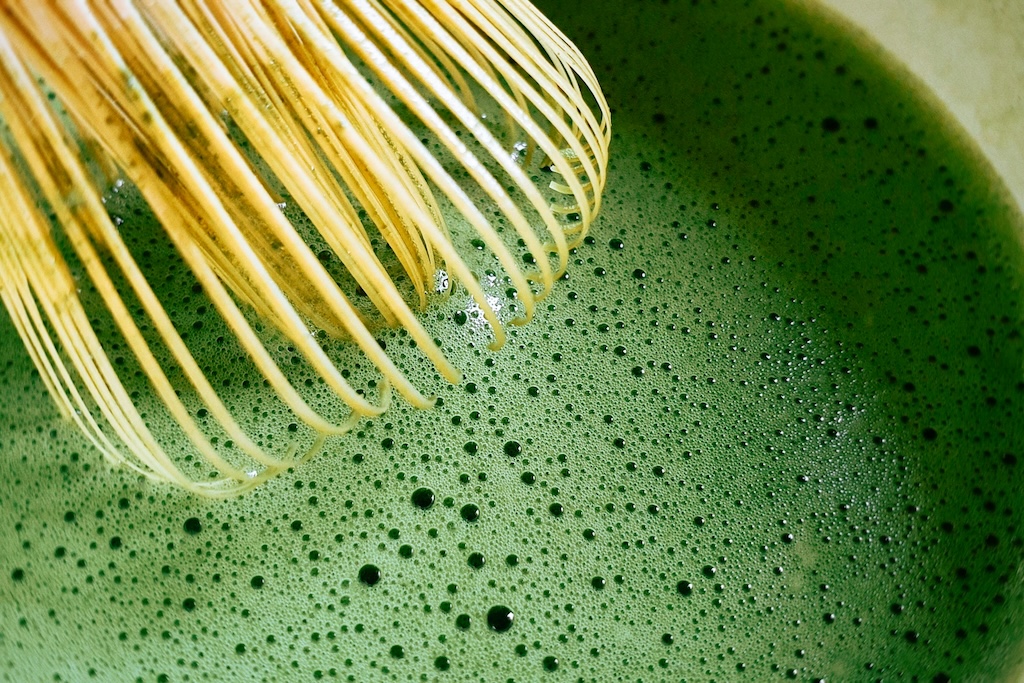
Etiquette & Behavior
As many tea ceremony experiences offer spoken guides and welcome questions, guests are welcome to come with no prior knowledge or expectations. Additionally, each school and each host listed here may follow slightly different etiquette.
There are a few important rules for even the novice to follow across all of them, however.
1) Wear clean socks.
Nearly all tea ceremonies are performed in tatami rooms where shoes are not allowed. Make sure once your shoes are off that your feet are covered and presentable.
2) Don’t wear strong fragrances, perfumes or colognes.
Although it’s generally a good rule when traveling anywhere as a courtesy to strangers with allergies, asthma and other sensitivities, it’s a hard requirement for many places in Japan, especially restaurants and tea ceremony events. Everything about the experience must be subtle and restrained, including scent. A clear air also makes it easier for everyone to enjoy the complex aroma of the tea itself.
3) Be gentle in all things.
Tea ceremony, even when done with more casual presentations, is a chance to enter a serene space completely divorced from the rest of the chaotic world. Much of what constitutes the etiquette for the ceremony itself; the placement of the hands, the number of steps, the way a fan is laid on the floor, etc.; is all to contribute to an atmosphere of refinement and calm. But, even the most inexperienced tea ceremony participant can elicit this feeling by simply moving carefully, speaking gently, and considering the comfort of others.
It’s polite to take notice of scrolls, floral arrangements, and the state of the garden view, all of which are highly seasonal. If being served in a traditional tea room, you may notice different woods and carpentry methods used around the alcove and ceiling, which provide contrast, often evoking different elements of nature.
Appreciating Ceremonial Matcha
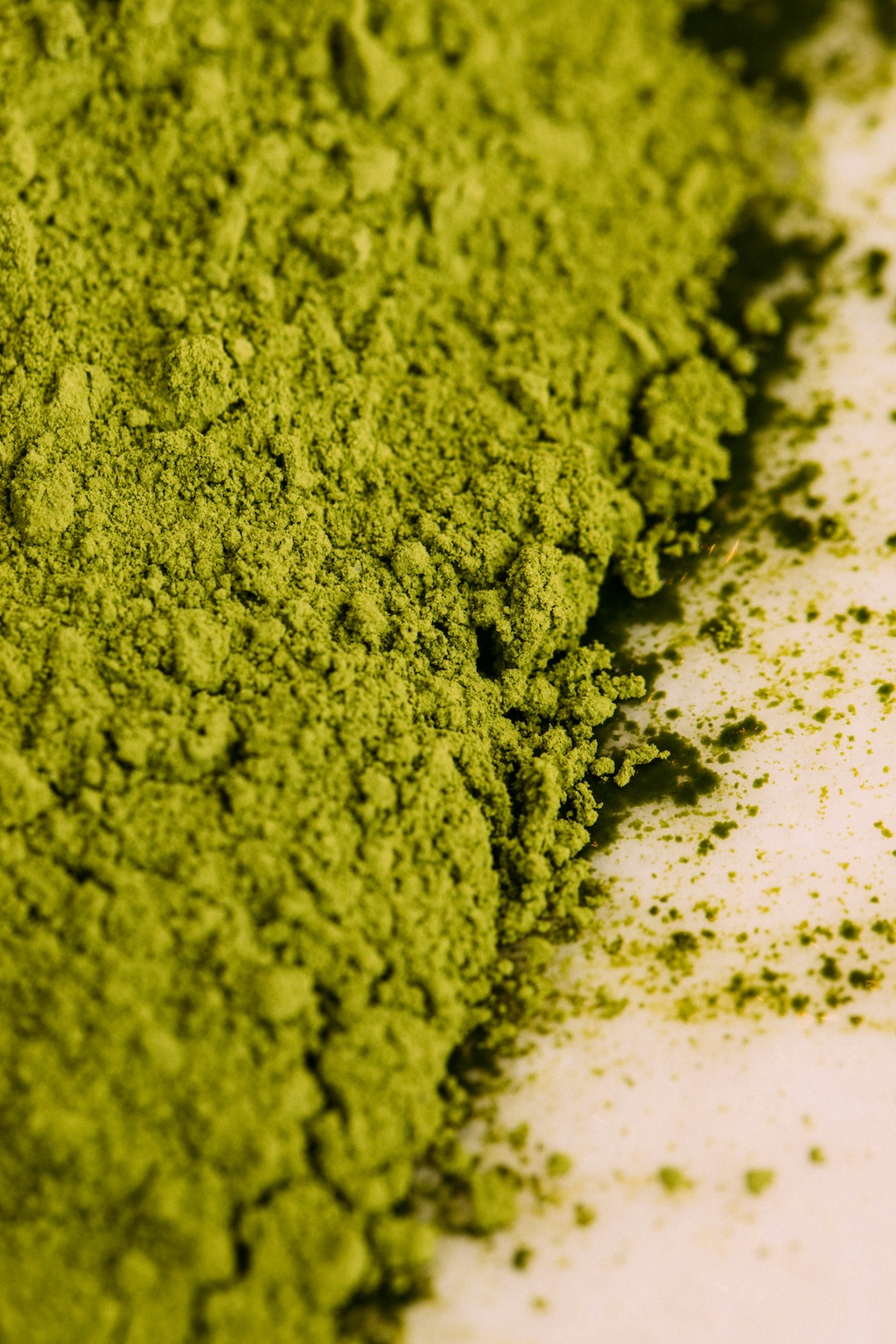
All green tea comes from the green tea plant, though the method of growing, picking and processing all affect the flavor to make the many teas found in Japan, even including Kanazawa’s local specialty, the roasted stem tea, Kaga-boucha.
For the tea ceremony itself, one of two primary types of matcha are served.
Usucha (薄茶) is often translated as “weak” or “thin matcha.” It’s the kind you’ll most likely see when ordering a matcha and traditional sweet set at various cafés. Lighter in color and taste, usucha is only mildly bitter, but still retains matcha’s earthy, fresh aroma. Nearly all tea ceremony experiences offer usucha.
On the other hand, koicha (濃茶), often called “thick matcha,” is rich, viscous, and quite bitter. Its intense color appears like a cupful of dark green paint in the bowl. Though it’s typically used for the most formal of tea ceremonies, a few tea ceremony experience locations offer it as well.
Where to Have a Tea Ceremony in Kanazawa
All locations require advanced reservations. Unless otherwise noted, please expect at least three days advance notice.
Tea Houses that Offer Tea Ceremony Experiences
Saisetsu-tei in Gyokusen’en, the Nishida Family Garden
Close to Kenrokuen Garden
Reservations made in Japanese by phone only.
We are happy to call on behalf of Kaname Inn Tatemachi guests.
Kofuen
Close to Kutani Kosen Kiln and not far from Myoryuji (the “Ninja Temple”)
English reservations by email or phone
Mikoto Tea House
A short walk from Kazuemachi Geisha District and Higashi Chaya District
English reservations by email or phone
9:30 a.m. start only, most weekdays (Saturdays may be possible, but never guaranteed.)
koicha (ceremony only) and usucha (ceremony and tea-making experience)
Soyu
In Higashi Chaya District
English reservations by email only
Offers both koicha and usucha
Kenroku-tei
A traditional tea house inside Kenrokuen Garden grounds. (Garden entry is a separate ticket fee.) Instructions are given in English.
Online reservations; same day reservations possible.
MachiyaJuku
A traditional Japanese folk house, or “machiya,” in Higashi Chaya that specializes in tea ceremony experiences for both Japanese and overseas tourists. Tea ceremony experience options include just the ceremony itself, tea ceremony in kimono, and tea ceremony and Japanese incense creation. Bookings can be made online if done at least two days in advance, depending on availability. Phone calls can be made for same day or one-day advance reservations. (See their booking page.)
Special Event: The Grand Tea Ceremony
During the Hyakumangoku Festival, the massive 3-day affair at the beginning of June, an Ohchakai, or Grand Tea Ceremony is held for the public. This is one of the very few such tea ceremony events held on a massive scale in Japan.
Two other Ohchakai events are held in various tea houses throughout Kanazawa in autumn. Local university students host one in early autumn.
The second is the Kanazawa Castle & Kenrokuen Ohchakai around mid- to late autumn. It’s considered one of the three greatest grand tea ceremonies in all of Japan, alongside the Nijo Palace in Kyoto and Matsue Castle in Shimane.
The timing for both of these events can change by year, and there is less advance notice for the events than the Grand Tea Ceremony of the Hyakumangoku Festival.

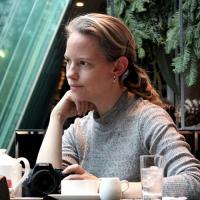
About a decade ago Rachel fell off a bus and then fell in love with this traditional-crafts and ice-cream-consuming capital of Japan. Editor and amateur photographer with a penchant for nature and history. Not actually fifty songbirds in a trench coat. (Former penname: Ryann)


